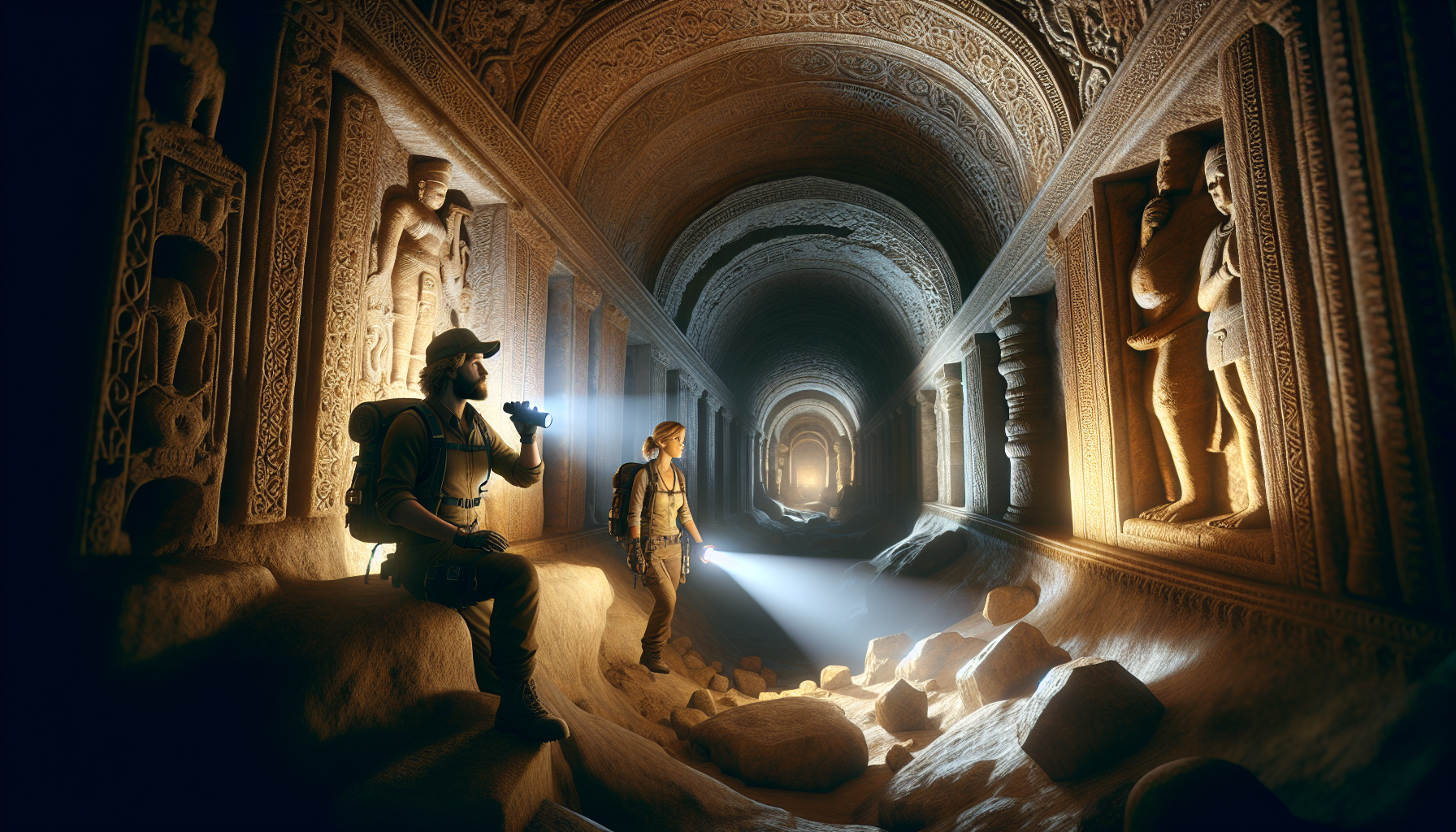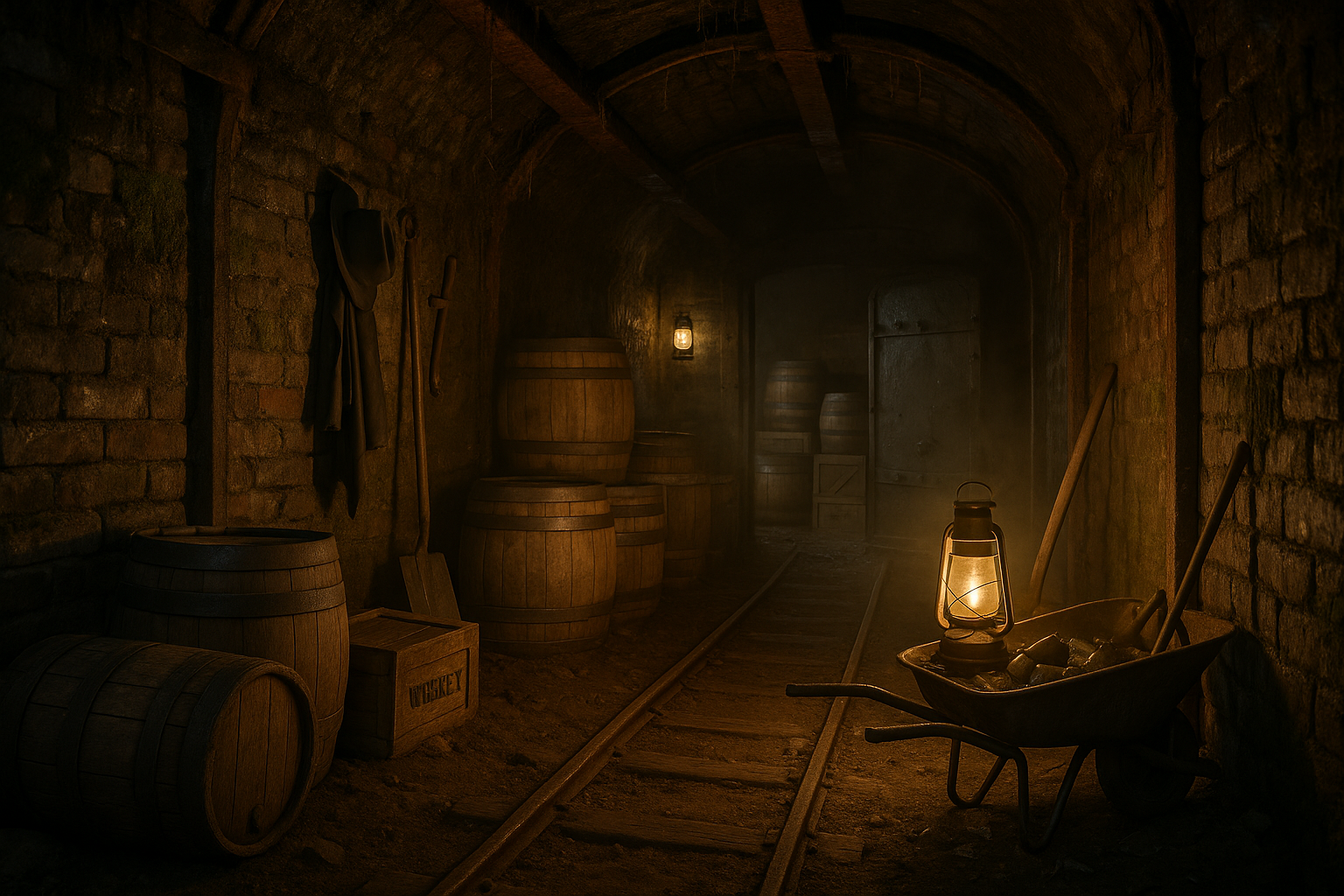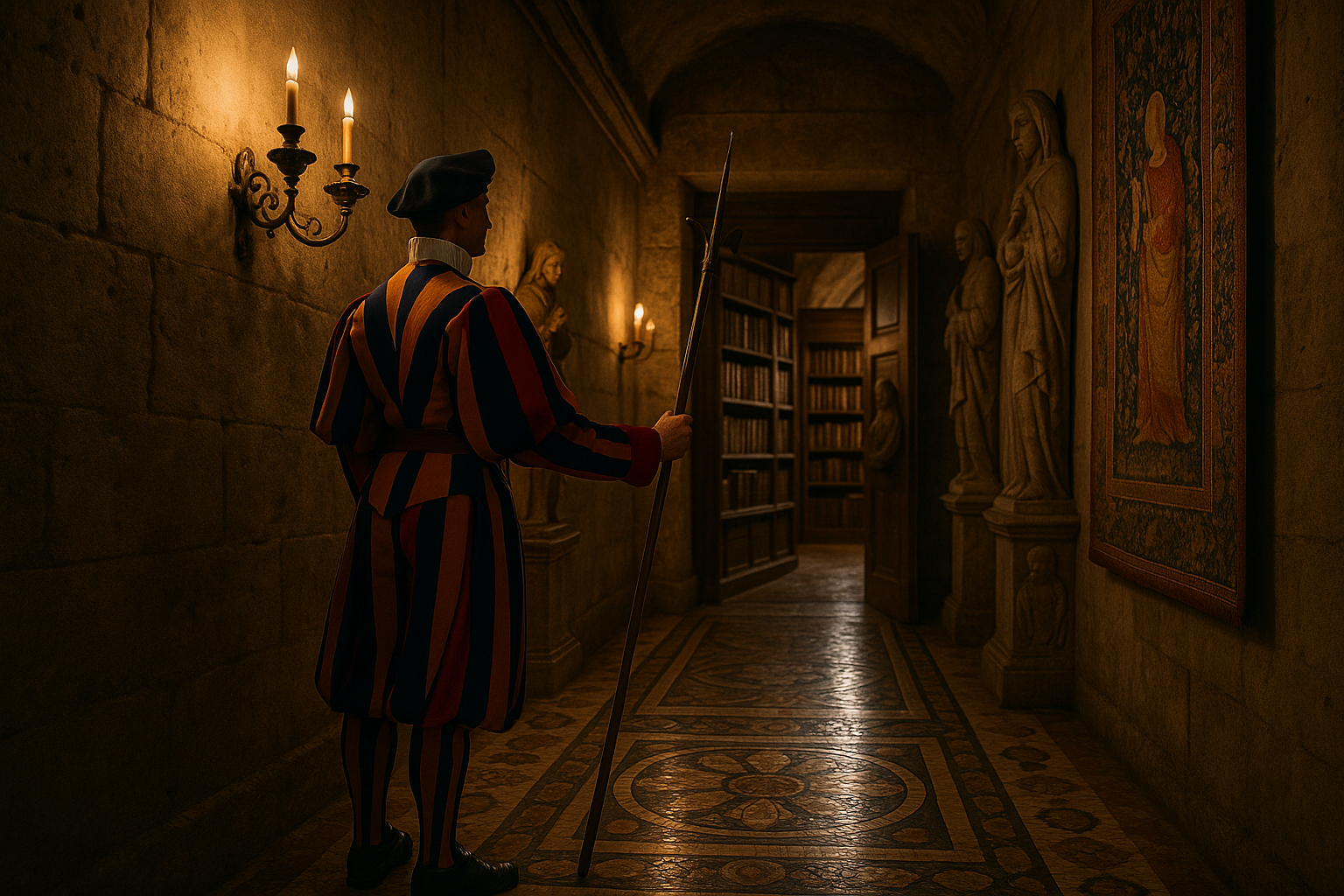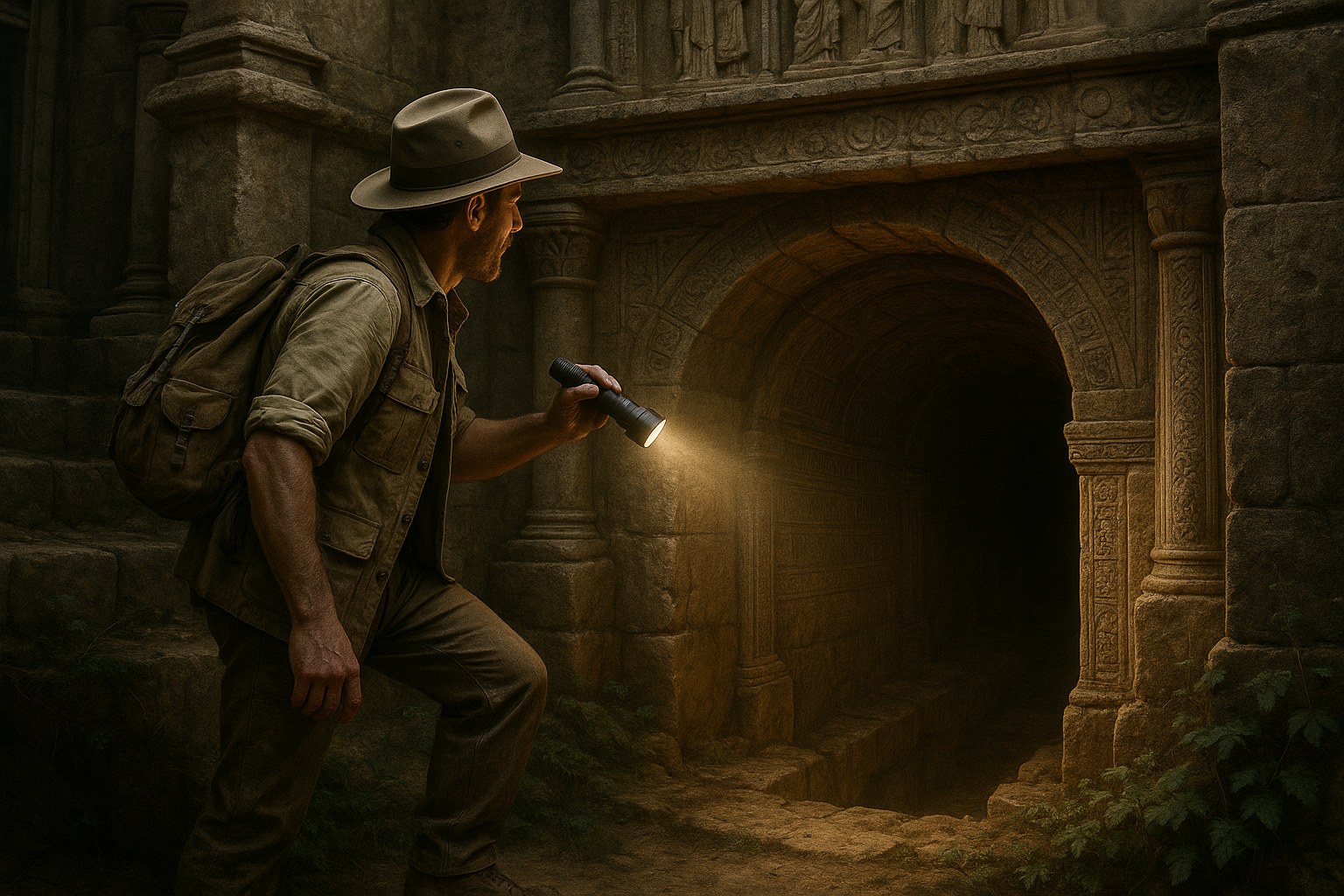Beneath the bustling cities and serene landscapes of our modern world lies a hidden realm that whispers tales of ancient civilizations and forgotten times. Welcome to the mesmerizing world of underground cities, where history meets mystery and the past is etched into stone. As we embark on this enthralling journey to uncover the world’s oldest subterranean wonders, prepare to be transported back in time, where you’ll explore the ingenious feats of engineering, the cultural richness, and the intriguing stories that these hidden metropolises have safeguarded for centuries. 🌍✨
Our adventure begins in the heart of Cappadocia, Turkey, where the intricate tunnels of Derinkuyu extend into the depths of the earth. Imagine a city where people lived, worked, and thrived entirely underground, escaping the perils of war and harsh climates. But Derinkuyu is just the tip of the iceberg. From the ancient catacombs of Rome that hold the whispers of the early Christians to the labyrinthine paths of Naours in France, these underground cities reveal a world that is both awe-inspiring and enigmatic. What motivated entire populations to carve out their lives beneath the surface? How did they create such complex networks without the technology we rely on today? These questions lead us to ponder the ingenuity and resilience of our ancestors.
Throughout this exploration, we will delve into the architectural brilliance and historical significance of these subterranean cities, shedding light on how they served as sanctuaries, religious sites, and even thriving communities. We’ll uncover fascinating details about their construction, purpose, and the daily lives of their inhabitants. Whether it’s the strategic marvel of Kaymakli in Turkey, the monastic wonders of Lalibela in Ethiopia, or the mystical caves of Ellora in India, each site tells a unique story of human perseverance and creativity. So, tighten your seatbelts as we descend into the depths of these ancient wonders, where every tunnel and chamber offers a window into a world long past but never forgotten. 🏺🗝️
Introduction to the Ancient Underground Cities
The allure of ancient underground cities has fascinated historians, archaeologists, and curious travelers for centuries. These subterranean marvels not only reflect the ingenuity of past civilizations but also offer a unique glimpse into the daily lives, challenges, and triumphs of those who once inhabited these hidden worlds. From the intricate tunnels of Derinkuyu in Turkey to the mysterious caverns of Naours in France, each site tells its own story of survival, culture, and adaptation. These underground labyrinths were not merely shelters but served as vibrant communities that thrived beneath the surface.
Why Were Underground Cities Built?
Understanding the reasons behind the construction of underground cities requires an exploration into the historical and geographical contexts of their times. Primarily, the need for security and defense played a critical role. During periods of frequent invasions and warfare, going underground offered a strategic advantage. The labyrinthine structures were difficult for enemies to navigate, providing a safe haven for residents. Additionally, the cooler temperatures underground made these cities ideal for storing perishables and served as a refuge during harsh weather conditions.
The Engineering Marvel of Derinkuyu
Derinkuyu, located in the Cappadocia region of Turkey, stands as one of the most impressive examples of ancient underground engineering. This multi-level city, carved directly into volcanic rock, is estimated to have housed up to 20,000 people along with their livestock and provisions. The complexity of Derinkuyu’s design, with its extensive network of tunnels, rooms, and communal spaces, is a testament to the advanced engineering skills of its builders.
Life in Derinkuyu: A Glimpse Into the Past
Exploring the daily life in Derinkuyu offers a fascinating insight into the social and cultural dynamics of its time. The underground city was designed to support a large population, with communal spaces such as kitchens, baths, and even schools. The presence of chapels and religious spaces indicates the importance of spiritual life to the inhabitants. The layout also suggests a highly organized community, with designated areas for specific activities, ensuring efficient use of space and resources.
Comparative Analysis of Underground Cities
| City | Location | Depth (m) | Population Capacity | Unique Features |
|---|---|---|---|---|
| Derinkuyu | Turkey | 85 | 20,000 | Extensive ventilation system, religious spaces |
| Naours | France | 33 | 3,000 | Chapel, graffiti from World War I soldiers |
| Montezuma Well | USA | Not applicable (natural sinkhole) | Unknown | Natural spring, unique ecosystem |
| Wieliczka Salt Mine | Poland | 327 | Not applicable (mine) | Salt sculptures, underground lakes |
Naours: The Subterranean Refuge of France
In the picturesque region of Picardy in France lies the underground city of Naours, an extensive network of tunnels and rooms that served as a refuge during times of conflict. Unlike Derinkuyu, Naours is not as deep, yet it spans over 3 kilometers in length, with numerous rooms and corridors carved out of chalk. This city is a testament to the resourcefulness of its builders, who transformed natural caves into a complex living environment.
Exploring Naours: A Journey Through History
Walking through the tunnels of Naours is like stepping back in time. The layout of the city reflects its multifunctional purpose, with areas designated for living, worship, and storage. The presence of a chapel underscores the role of faith as a source of comfort during tumultuous times. Additionally, the city was equipped with wells and ventilation shafts, ensuring that its inhabitants could survive for extended periods underground.
Comparing Naours and Derinkuyu: A Study in Diversity
| Feature | Naours | Derinkuyu |
|---|---|---|
| Material | Chalk | Volcanic rock |
| Historical Use | World War I refuge | Byzantine and earlier eras |
| Depth | Shallow | 85 meters |
| Unique Aspect | WWI graffiti | Extensive ventilation system |
Montezuma Well: The Natural Underground Marvel
While not a man-made underground city, Montezuma Well in Arizona offers a fascinating example of how natural geological formations have been utilized by human civilizations. This natural sinkhole is part of the Montezuma Castle National Monument and has served as a vital resource for indigenous peoples for centuries. The well is fed by a continuous spring, creating a unique ecosystem that has supported human and wildlife communities throughout history.
The Ecological and Cultural Importance of Montezuma Well
Montezuma Well’s unique ecosystem is home to a variety of plant and animal species, some of which are found nowhere else on earth. The constant influx of warm, mineral-rich water creates an environment conducive to the growth of algae and other aquatic plants, which in turn support a diverse range of wildlife. This biodiversity highlights the interconnectedness of natural and human systems, demonstrating the importance of sustainable resource management.
Montezuma Well vs. Man-Made Underground Cities
| Feature | Montezuma Well | Man-Made Underground Cities |
|---|---|---|
| Origin | Natural | Constructed |
| Primary Use | Water source, spiritual site | Defense, habitation |
| Unique Aspect | Unique ecosystem | Complex architecture |
Exploring Further: Resources and Recommendations
The exploration of ancient underground cities is an ongoing journey of discovery, with new findings continually enhancing our understanding of these incredible sites. Whether you are a history enthusiast, an archaeology buff, or simply curious about the wonders of the past, there are numerous resources available to deepen your knowledge.
- Consider visiting local museums and archaeological sites to learn more about the history and culture of ancient civilizations.
- Engage with academic articles and publications that delve into the details of underground city construction and usage.
- Join online forums and communities dedicated to historical and archaeological exploration to connect with fellow enthusiasts.

Conclusion
Conclusion: Unveiling the Depths of Human Ingenuity
In this exploration of the world’s oldest underground cities, we have delved into the profound ingenuity and resilience of ancient civilizations. These subterranean marvels stand as a testament to human adaptability, resourcefulness, and the enduring quest for safety and sustainability. By revisiting the architectural prowess and societal complexities of these hidden cities, we gain a deeper appreciation for our ancestors’ ability to thrive in diverse environments, overcoming challenges that continue to resonate with contemporary society.
Throughout this article, we journeyed through the labyrinthine passages of Derinkuyu and Kaymakli in Turkey, witnessing how their vast networks offered sanctuary and community cohesion in times of peril. These cities, carved meticulously into the earth, reveal a sophisticated understanding of engineering and urban planning. Their capacity to support thousands of inhabitants showcases an impressive feat of logistics and foresight, one that prompts us to reflect on our own modern infrastructures and their vulnerabilities.
Similarly, the underground city of Naours in France provided a glimpse into how communities sought refuge during times of war and conflict. This extensive network of tunnels illustrates the interplay between necessity and innovation, where the subterranean landscape became a strategic asset. The historical context of these underground havens enriches our understanding of the socio-political dynamics that shaped their construction and use, inviting parallels with current global issues of displacement and the search for safe havens.
The exploration of the ancient underground city of Beit Guvrin in Israel further underscored the multifaceted functions these spaces served. Beyond mere survival, they were centers of commerce, worship, and cultural exchange. This integration of daily life activities within the underground realms highlights the adaptability of human societies, adapting to environmental and external pressures while maintaining cultural continuity. Such insights encourage us to reflect on how modern societies might harness innovative approaches to coexist with the natural world sustainably.
Moreover, as we examined the marvels of Cappadocia’s underground cities, the narrative of human creativity emerged vividly. The artistic embellishments found within these subterranean chambers speak to the enduring human spirit, one that seeks beauty and expression even in the most utilitarian of spaces. This interplay between functionality and aesthetics reminds us of the profound interconnectedness of human existence, where the creation of beauty is as vital as the preservation of life.
The overarching theme resonating throughout this exploration is the remarkable adaptability of human beings. These ancient underground cities are not just relics of the past; they are lessons for the future. As modern societies grapple with the challenges posed by climate change, urbanization, and socio-political unrest, the ingenuity of our ancestors serves as a beacon of inspiration. Their ability to engineer sustainable living environments under adverse conditions challenges us to rethink our approaches to contemporary urban development and disaster preparedness.
In reinforcing the importance of uncovering these ancient wonders, we recognize the value of preserving and studying these sites. They are cultural treasures that offer invaluable insights into human history and the evolution of urban living. By safeguarding these sites and promoting archaeological research, we ensure that future generations can continue to learn from and be inspired by the innovations of the past.
As you reflect on the fascinating journey through these underground cities, consider the broader implications of their legacy. How can we apply the lessons of adaptability and innovation to address today’s challenges? How might we reimagine urban living in a way that harmonizes with our natural environment, ensuring resilience and sustainability for generations to come?
We invite you to share your thoughts and insights on these remarkable feats of human engineering. Your engagement in the dialogue surrounding the preservation and study of these ancient cities is crucial. By sharing this article with others, you contribute to a collective appreciation for the wonders of human history and the potential for future innovation. Together, let’s celebrate the enduring spirit of creativity and resilience that defines humanity.
For further exploration of these captivating sites and the ongoing research that continues to uncover their mysteries, we encourage you to explore reputable sources such as UNESCO’s World Heritage Sites and the Archaeological Institute of America. These resources offer a wealth of information on the preservation efforts and historical significance of these underground cities.
In conclusion, as we marvel at the ancient wonders hidden beneath the surface, let us carry forward the spirit of exploration and innovation that defines the human journey. May the lessons learned from our ancestors guide us toward a future where we continue to uncover the depths of possibility, crafting a world that embraces both its past and its potential. 🌍✨
Toni Santos is a visual storyteller and artisan whose work explores the quiet power of what lies beneath. With a deep fascination for subterranean and hidden architecture, Toni uncovers the layers, voids, and forgotten spaces that shape our built environment from the shadows.
His art is a journey through the unseen — from ancient underground chambers to sealed passageways, service tunnels, and foundations buried in time. Each creation tells a story of silence, secrecy, and structure — revealing how absence and concealment can be just as meaningful as what’s visible above ground.
Whether working through visual compositions, architectural studies, or symbolic handcrafted pieces, Toni captures the soul of hidden spaces. His work bridges art and archaeology, blending design with discovery. Trained in visual design and traditional techniques, Toni creates with intention. His pieces don’t just depict — they interpret, inviting viewers to rethink what space, memory, and architecture mean when they’re hidden from view.
As the creative force behind Vizevex, Toni shares this perspective through curated visual narratives, symbolic collections, and interpretive essays that give voice to the quiet geometries beneath our feet.
His work is a tribute to:
The mystery of spaces built to be forgotten
The symbolism embedded in foundations, voids, and passageways
The timeless connection between human intention and hidden structure
Whether you’re an artist, an urban explorer, or someone fascinated by the unseen frameworks that support our world, Toni invites you into a realm where architecture becomes myth — one corridor, one layer, one buried story at a time.





